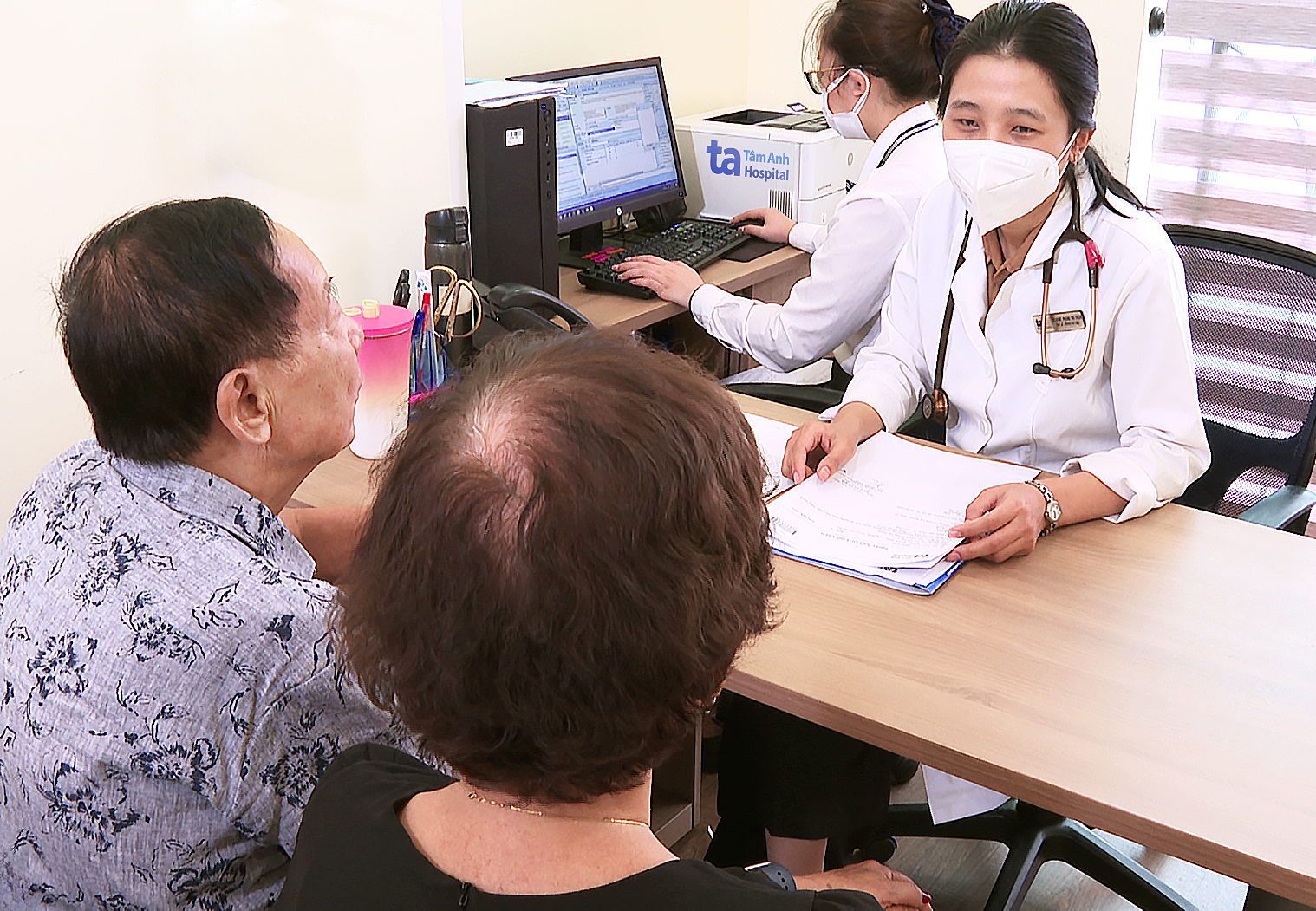According to Dr. Phung Thi Thom from the Respiratory Department of Tam Anh General Hospital in Hanoi, certain controlled breathing techniques used in respiratory rehabilitation or mental health care can optimize airflow, supporting both mental and physical well-being.
Pursed-lip breathing, similar to blowing out a candle, creates positive pressure in the airways, preventing them from collapsing prematurely. This technique helps reduce residual air volume in the lungs, improves gas exchange efficiency, extends exhalation time, and alleviates shortness of breath. Pursed-lip breathing is beneficial for patients with chronic obstructive pulmonary disease (COPD) or asthma, lessening the burden on respiratory muscles and improving overall respiratory quality.
How to perform: Gently inhale through your nose (for about 2 seconds), purse your lips, and slowly exhale for twice the inhalation time (about 4-6 seconds). Repeat as needed.
 |
Dr. Thom examines a patient during a follow-up appointment. Photo: Tam Anh General Hospital |
Dr. Thom examines a patient during a follow-up appointment. Photo: Tam Anh General Hospital
Diaphragmatic breathing encourages the use of the diaphragm (the primary respiratory muscle) instead of relying on accessory respiratory muscles in the neck and shoulders. During inhalation, the diaphragm contracts downwards, causing the abdomen to expand. During exhalation, the diaphragm relaxes, causing the abdomen to contract. Diaphragmatic breathing can enhance respiratory efficiency and lung function, increase physical endurance, and promote relaxation and stress reduction.
How to perform: Relax your shoulders, place one hand on your chest and the other on your abdomen. Inhale through your nose (for about 4 seconds), allowing your abdomen to expand. Hold for 2 seconds. Exhale through your mouth (for about 6 seconds), allowing your abdomen to contract.
Box breathing (4-4-4-4) follows a 4-stage cycle of equal duration: inhale, hold, exhale, and hold after exhalation, each phase lasting about 4 seconds. This method helps calm the nervous system, reduce stress, and improve focus.
Blow as you go breathing encourages exhaling while performing strenuous activities such as standing up, climbing stairs, or bending over. Proper execution of this technique helps reduce pressure on the lungs, conserve energy, and minimize breathlessness.
The 4-7-8 breathing technique involves inhaling for 4 seconds, holding the breath for 7 seconds, and slowly exhaling for 8 seconds. This technique can calm the sympathetic nervous system, helping to reduce anxiety and improve sleep.
Breathing techniques in yoga and meditation, including conscious breathing methods like Buteyko and Papworth, can enhance lung ventilation, reduce anxiety, and improve overall health.
Dr. Thom emphasizes the importance of performing these techniques correctly for effective gas exchange, stabilizing medical conditions, preventing complications, and enhancing quality of life.
Minh Duc
| Readers can submit questions about respiratory illnesses here for doctors to answer. |












